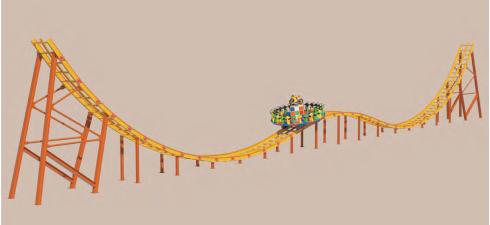Exploring Various Types of Roller Coasters and Their Unique Features
The Thrills of Roller Coaster Types
Roller coasters have long been a staple of amusement parks around the world, captivating thrill-seekers of all ages. Each coaster type offers a unique blend of speed, height, and maneuverability, resulting in distinct experiences that can leave riders breathless. In this article, we will explore various roller coaster types, examining their characteristics and the excitement they provide.
1. Wooden Roller Coasters
Wooden roller coasters are the classic design, known for their nostalgic charm and rattling ride experience. Built primarily from wood, these coasters often feature a more rugged feel compared to their steel counterparts. The structure allows for interesting drops and curves, creating a sense of grace intertwined with the unpredictability of wooden construction. Coasters like the iconic Coney Island Cyclone embody the essence of woodies, delivering a thrilling ride that feels both exhilarating and rustic.
Steel roller coasters revolutionized the theme park landscape, emerging in the 1970s. With their smooth rides and ability to perform complex maneuvers, steel coasters can achieve higher speeds and more daring inversions. This category includes breathtaking models such as the Kingda Ka, which holds the record for the tallest coaster in the world and boasts an astounding drop of 418 feet. Riders can expect flips, loops, and rapid accelerations, making steel coasters a favorite among adrenaline enthusiasts.
3. Inverted Roller Coasters
roller coaster types

Inverted roller coasters take the thrill to a new level by suspending riders below the track. With their feet dangling freely, riders experience heightened intensity as they navigate loops and sharp turns without the comfort of a traditional seat. Iconic examples like The Batman at Six Flags parks offer a unique perspective, making the experience even more immersive. This type of coaster is particularly known for its dynamic ride paths, keeping riders on the edge of their seats as they swing through the air.
4. Launch Coasters
Unlike traditional coasters that utilize a lift hill, launch coasters use powerful magnetic or hydraulic systems to propel riders from a standstill to their top speeds in mere seconds. This sudden burst of acceleration creates unparalleled excitement and allows for a multitude of innovative designs. For instance, Top Thrill Dragster combines a launch with a vertical climb, reaching speeds of 120 mph in just 3.8 seconds. The thrill of being shot out like a cannon is a sensation unique to launch coasters.
5. Dive Coasters
Dive coasters are a newer addition to the roller coaster lineup and are designed to create an intense moment of anticipation. Riders are slowly lifted to a significant height before facing a near-vertical drop. The feeling of weightlessness during the first plunge can be exhilarating, as seen in rides like Falcon’s Fury. These coasters often incorporate sharp turns and hills post-drop, making the experience a mix of terror and joy.
Conclusion
From nostalgic wooden coasters to adrenaline-pumping steel innovations, the world of roller coaster types offers a thrilling array of experiences for all types of riders. Each design brings its own excitement, visual aesthetics, and adrenaline rush, making roller coasters a fundamental part of the amusement park experience. Whether you are a casual rider or a hardcore coaster enthusiast, there is always a new adventure waiting to be discovered on the tracks. So the next time you find yourself at an amusement park, embrace the thrill and let the ride take you on an unforgettable journey.
-
Top Amusement Equipment Manufacturer Rock n Roller Coaster & Carousel ManufacturerJun.10,2025
-
World's Scariest Roller Coaster Experience Ultimate Thrill & HeightJun.10,2025
-
Ultimate Thrill Ride Roller Coaster High-Speed, Safe AdventureMay.30,2025
-
Carousel Mansfield Rides Premium Indoor & Event SolutionsMay.30,2025
-
T3 Roller Coaster High-Thrill, Safe Ride for Theme Parks & ResortsMay.30,2025
-
Roller Coaster Cart Design Custom-Built & High-Safety Thrill Ride VehiclesMay.30,2025
